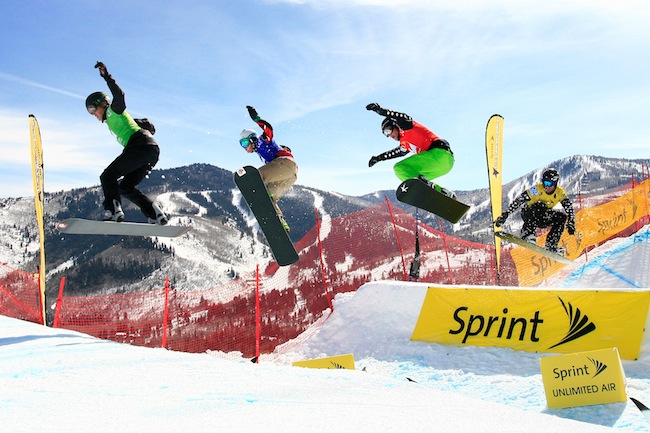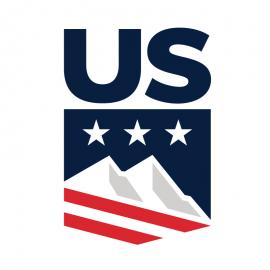USSA Sport Education Coaches Tip of the Week: July 2 2013

Each week the USSA Sport Education Department will post a Coaches Tip of the Week. The information will rotate through the ski and snowboard disciplines so check back each week to see the newest tip!
Technical Concepts in Snowboard Coaching: Fundamental Movements
This except was taken from the USASA Level 100 Coaching Reference Guide
As a coach, it's your job to observe and identify fundamental movements to understand what goes well and what does not in each run. Then you need to break these observations down into a simple message that either reinforces or corrects these movement patterns. The concepts, discussed below: stance, alignment, fundamental movements, board performance, and time-intensity-duration give the coach a consistent and simplified framework to break down complex movements.
Stance and Balance
One of the most basic fundamental skills in snowboarding is a rider's stance on the board. You can look at stance and balance as the first step in a chain of events that ends with the board performing in a desired way. If that first link is ineffective, it'll throw the whole sequence out of whack. Let's start with some basic balance principles that are common with most sports:
• Weight distributed evenly on both feet
• Knees slightly bent
• Back straight
• Abdomen and shoulder muscles relaxed
• Head up and eyes looking straight ahead
Reference Alignment
Once effective stance is in place, we then need to make sure the rider is aligned with their equipment. Shoulders and hips should be parallel to the snow, with center of mass over the turning edge. Toe, knee, hip, and shoulders should be aligned into one plane. These three principles make up the guiding principles that allow the coach a point of reference to evaluate effective versus ineffective movements in the rider.
Fundamental Movements
Once the rider is balanced and aligned, they must add movement to make the board perform an action. This is accomplished by applying one, two, or a complex pattern of the following fundamental movements.
Flexion/Extension is when the muscles contact or expand causing the joint to close or open. Joints in this movement are typically called hinge or saddle joints. Hinge joints are one convex bone surface that work with the concave surface of another bone that limit the movement to flexion/extension. Saddle joints are similarly constructed, but also allow for some rotational movements as well. Flexion/extension movements can be very small (extending a finger) or very large (squatting).
Rotation is when the muscles and surrounding tissues cases a bone to rotate within a socket joint to create a circular movement. Rotary movements can also be small (circling the hands around the wrist) or large (rotating the shoulders around the spine). Rotary movements can also move in opposing directions. For example, the shoulders can rotate clockwise as the hips rotate counter clockwise. In snowboarding, we commonly call this the upper-lower body separation. This movement has many critical applications to all disciplines of snowboarding.
Blending of Movements There are very few joints in the body that are exclusively flexion, extension, or rotation. In fact, most movements in the body involve one or more joints. It is likely that most movements will involve some elements of both movement types.
Upper-Lower Body Separation and Opposing Movements The ability to make movements with one part of the body while making opposing movements with another is an integral part of advanced snowboarding. This type of complex movement is called body separation. In developing riders, there tends to be very little separation movements. As the rider develops more advanced skills, there are more complex combinations of separation movements.
Board Performance
Once a set of movements is applied to the balance and aligned rider, a specific action occurs. At its most basic these movements apply pressure to the snowboard causing it to perform an action or task. We can break these actions (performances) into four general categories.
Twist is when the rider uses a combination of rotation and flex/extension movement to flex the board along its long axis.
Tilt is when the rider applies flex or extension movement to one edge of the board causing it to tip onto its edge.
Pivot is primarily a rotary movement where the rider turns their body creating a point that the board rotates around. Adding flex/extension movements can change the pivot point.
Flex is primarily a flex extension movement with the lower body that flexes the board between the tip and the tail. These movements can be used to match changes in terrain or when jumping. By applying opposing movement between the front and back foot, the rider can also create different flex patterns on the board.
Timing, Intensity and Duration (TID)
The final factor in examining movement patterns is the time involved in each action. Timing is when the movement is applied, intensity is how much is applied, and duration is for how long the action or movement is performed.
Blending, Simultaneous and Overlapping Movement Patterns
Most complex movements are a blending of many movements and performances. By varying the timing, intensity and duration of these actions, a rider can create incredibly complex chains of movements involving many layers of actions.
